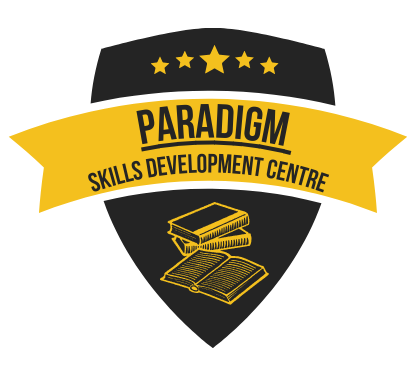Course Introduction
The ICTQual Level 2 Award in Moving People Safely is designed to provide learners with the knowledge and skills necessary to move people safely and efficiently. This course is particularly essential for those working in healthcare, social care, and related fields where the safe handling of individuals is a daily requirement. It aims to minimize the risk of injury to both caregivers and individuals being moved, ensuring a safer and more supportive environment.
Course Overview
Moving people safely is a critical aspect of many caregiving roles. Improper techniques can lead to significant injuries, affecting both the caregivers and those they assist. This course combines theoretical knowledge with practical skills, focusing on the principles of safe people handling, risk assessment, and the application of safe techniques. Through a mix of classroom instruction and hands-on practice, participants will gain a thorough understanding of safe moving and handling practices specific to people.
Course Study Units
- Introduction to Moving and Handling
- Risk Assessment
- Anatomy and Physiology
- Safe Handling Techniques
- Practical Skills Development
- Communication and Person-Centered Care
- Emergency Situations
- Health and Safety Practices
- Legal and Ethical Considerations
Learning Outcomes
Upon completing this course, learners will be able to:
Introduction to Moving and Handling
- Understand the Importance of Safe Moving and Handling: Participants will grasp the critical role of proper techniques in preventing injuries and ensuring the safety of both handlers and individuals being moved.
- Familiarize with Relevant Legislation and Guidelines: Participants will be able to identify and apply key health and safety legislation and organizational policies related to moving and handling.
2. Risk Assessment
- Conduct Comprehensive Risk Assessments: Participants will learn to systematically identify potential hazards, assess risks, and implement appropriate control measures before undertaking any moving and handling activity.
- Apply Risk Assessment Frameworks: Participants will be adept at using standard risk assessment tools and frameworks in various scenarios.
3. Anatomy and Physiology
- Understand Basic Anatomy and Physiology: Participants will gain knowledge of the human musculoskeletal system, focusing on how different parts of the body are affected by movement and handling.
- Recognize the Impact of Poor Handling: Participants will identify common injuries resulting from improper moving and handling techniques and understand how to prevent them.
4. Safe Handling Techniques
- Master Manual Handling Techniques: Participants will demonstrate proficiency in various manual handling techniques, including lifting, transferring, and repositioning individuals safely.
- Utilize Handling Aids and Equipment: Participants will learn to appropriately select and use handling aids and equipment, such as hoists and transfer boards, to facilitate safe movement.
5. Practical Skills Development
- Demonstrate Practical Handling Skills: Participants will practice and refine their moving and handling techniques under supervision, ensuring they can apply these skills confidently in real-world settings.
- Receive and Act on Feedback: Participants will improve their techniques based on constructive feedback from trainers.
6. Communication and Person-Centered Care
- Enhance Communication Skills: Participants will develop effective communication strategies to interact with individuals being moved, ensuring clarity and sensitivity.
- Implement Person-Centered Care: Participants will apply principles of person-centered care, respecting the dignity, preferences, and autonomy of individuals during moving and handling activities.
7. Emergency Situations
- Manage Emergency Situations: Participants will learn techniques for safely moving individuals in emergencies, such as during evacuations or medical crises.
- Develop Contingency Plans: Participants will create and implement contingency plans to handle emergencies effectively.
8. Health and Safety Practices
- Promote Personal Safety: Participants will understand how to protect themselves from injury during moving and handling tasks by applying ergonomic principles and safe practices.
- Implement Health and Safety Measures: Participants will establish and maintain health and safety measures in their working environment.
9. Legal and Ethical Considerations
- Understand Legal Responsibilities: Participants will identify their legal responsibilities and those of their employers in ensuring safe moving and handling practices.
- Apply Ethical Principles: Participants will integrate ethical principles into their practice, including obtaining consent, maintaining confidentiality, and respecting individual rights.
Course Benefits
- Enhanced Safety: Equip learners with the skills and knowledge to perform people handling tasks safely, reducing the risk of injury to both caregivers and individuals being moved.
- Legal Compliance: Ensure compliance with legal requirements related to safe people handling.
- Increased Confidence: Boost caregivers’ confidence in their ability to handle people safely and effectively.
- Improved Care Quality: Promote better care by ensuring safe and dignified handling of individuals.
Who is This Course For?
This course is ideal for:
- Healthcare professionals, including nurses and caregivers.
- Social care workers involved in the daily handling of individuals.
- Support staff in healthcare and social care settings.
- Health and safety officers in care environments.
- Individuals seeking to enhance their employability in healthcare and social care sectors.
Future Progression
Upon completing the ICTQual Level 2 Award in Moving People Safely, learners may consider advancing their knowledge and skills with further training opportunities, such as:
- ICTQual Level 3 Award in Moving People Safely: Advanced techniques and risk management in people handling.
- ICTQual Level 2 Award in Health and Safety in the Workplace: Comprehensive health and safety training to enhance overall workplace safety.
- ICTQual Level 3 Diploma in Health Safety and Environment: Extensive training in health, safety, and environmental management for higher-level roles in the care sector.
By completing this course, participants will be better prepared to handle people safely and effectively, ensuring a safer and more supportive environment for both caregivers and those they assist.







